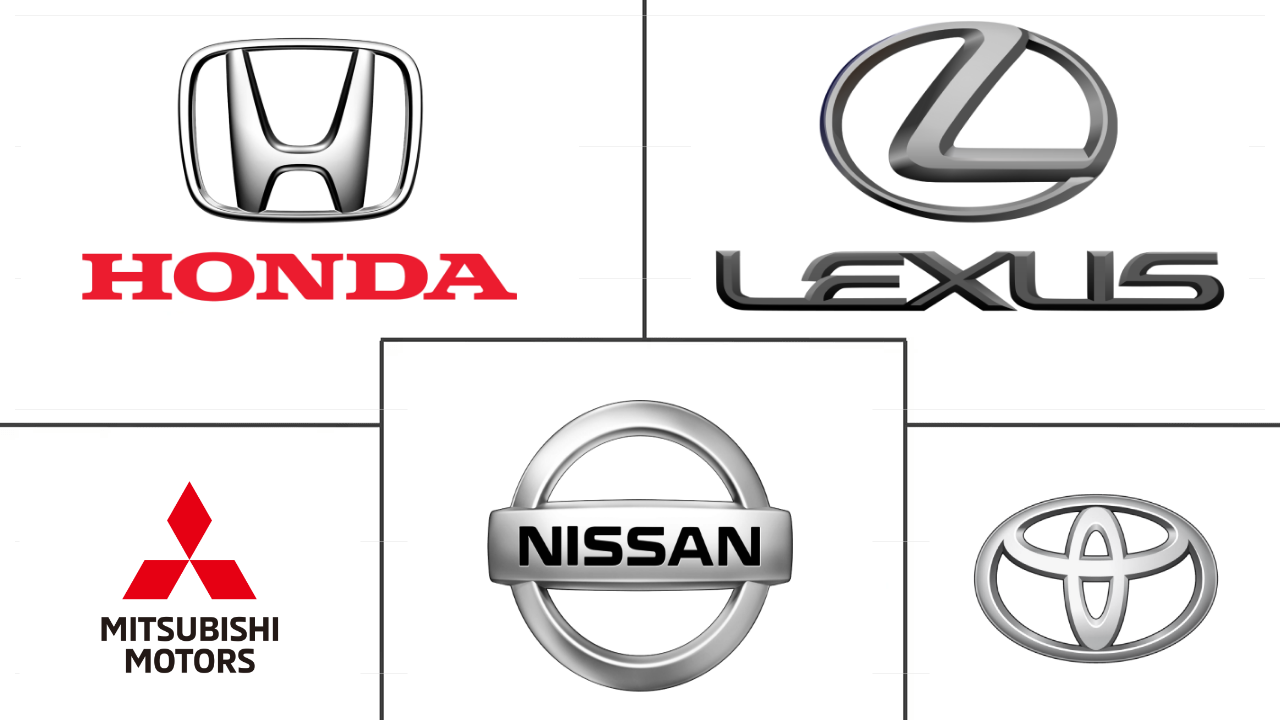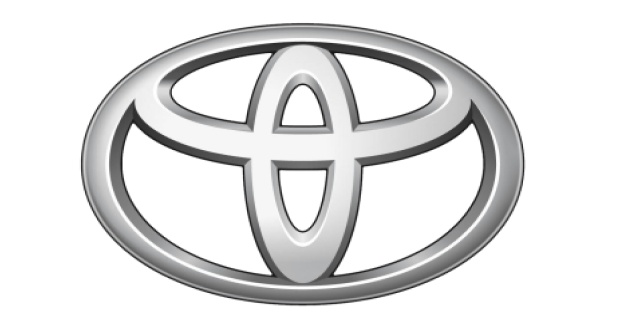Market Size of japan electric car Industry
|
|
Study Period | 2017 - 2030 |
|
|
Base Year For Estimation | 2023 |
|
|
Forecast Data Period | 2024 - 2030 |
|
|
Market Size (2024) | USD 43.32 Billion |
|
|
Market Size (2030) | USD 111.3 Billion |
|
|
CAGR (2024 - 2030) | 17.03 % |
Major Players |
||

|
||
|
*Disclaimer: Major Players sorted in no particular order |
Japan Electric Car Market Analysis
The Japan Electric Car Market size is estimated at 43.32 billion USD in 2024, and is expected to reach 111.3 billion USD by 2030, growing at a CAGR of 17.03% during the forecast period (2024-2030).
43.32 Billion
Market Size in 2024 (USD)
111.3 Billion
Market Size in 2030 (USD)
6.98 %
CAGR (2017-2023)
17.03 %
CAGR (2024-2030)
Largest Segment by Vehicle Body Type
34.96 %
value share, Sports Utility Vehicle, 2023
SUVs lead due to their spaciousness, higher seating capacity, and versatility, making them a popular choice among Japanese consumers who prioritize comfort and utility in their vehicles.
Fastest Segment by Vehicle Body Type
18.37 %
Projected CAGR, Multi-purpose Vehicle, 2024-2030
MPVs are the fastest-growing due to their flexibility, spacious interiors, and increasing demand for vehicles that offer both passenger and cargo transport capabilities.
Largest Segment by Fuel Category
86.37 %
value share, HEV, 2023
HEVs dominate due to their fuel efficiency, ability to switch between electric and combustion power, and widespread adoption driven by consumer preference and government support.
Fastest-growing Segment by Fuel Category
33.85 %
Projected CAGR, BEV, 2024-2030
BEVs are growing rapidly due to advancements in battery technology, increasing government incentives, and expanding charging infrastructure, making them an attractive option for consumers.
Leading Market Player
68.37 %
market share, Toyota Motor Corporation, 2023

Toyota Motor Corporation is the leading manufacturer of the electric car in Japan. Most of the revenue generated is from Japan, owing to a greater number of EV sales when compared to other countries.
Japan is increasingly focusing on customizing electric car offerings to cater to diverse consumer lifestyles and driving preferences
- The electric vehicle (EV) market in Japan is experiencing significant growth, driven by the country's efforts to reduce oil imports and minimize environmental impact. Japan's government has set ambitious goals, aiming for all new cars sold in the country to be electric or hybrid by 2050. This aligns with a global shift toward sustainable transportation, placing Japan as a pivotal player in the Asia-Pacific EV market. The market's expansion is evident in its value, which is expected to reach USD 43.32 billion in 2024, with a robust growth rate projected through 2029, highlighting Japan's commitment to transitioning toward electric mobility.
- Hatchbacks and sedans, being more common in urban settings due to their compact size and efficiency, have a significant share. Meanwhile, SUVs are gaining popularity for their versatility and comfort, appealing to a broader audience seeking both performance and sustainability. The market's composition reflects a diverse consumer preference, leaning toward a mix of practicality and eco-friendliness in vehicle choice.
- However, the expansion of Japan's EV market faces challenges, notably in charging infrastructure and regulatory hurdles. The number of charging stations has seen a decline due to high installation and operational costs, exacerbated by stringent safety regulations for high-output chargers. This situation underscores the need for substantial investments in infrastructure to support the growing number of EVs. Despite these challenges, opportunities abound, especially with Japan's push toward digital transformation and IoT connectivity in the automotive sector.
Japan Electric Car Industry Segmentation
Passenger Cars are covered as segments by Vehicle Configuration. BEV, FCEV, HEV, PHEV are covered as segments by Fuel Category.
- The electric vehicle (EV) market in Japan is experiencing significant growth, driven by the country's efforts to reduce oil imports and minimize environmental impact. Japan's government has set ambitious goals, aiming for all new cars sold in the country to be electric or hybrid by 2050. This aligns with a global shift toward sustainable transportation, placing Japan as a pivotal player in the Asia-Pacific EV market. The market's expansion is evident in its value, which is expected to reach USD 43.32 billion in 2024, with a robust growth rate projected through 2029, highlighting Japan's commitment to transitioning toward electric mobility.
- Hatchbacks and sedans, being more common in urban settings due to their compact size and efficiency, have a significant share. Meanwhile, SUVs are gaining popularity for their versatility and comfort, appealing to a broader audience seeking both performance and sustainability. The market's composition reflects a diverse consumer preference, leaning toward a mix of practicality and eco-friendliness in vehicle choice.
- However, the expansion of Japan's EV market faces challenges, notably in charging infrastructure and regulatory hurdles. The number of charging stations has seen a decline due to high installation and operational costs, exacerbated by stringent safety regulations for high-output chargers. This situation underscores the need for substantial investments in infrastructure to support the growing number of EVs. Despite these challenges, opportunities abound, especially with Japan's push toward digital transformation and IoT connectivity in the automotive sector.
| Vehicle Configuration | ||||||
|
| Fuel Category | |
| BEV | |
| FCEV | |
| HEV | |
| PHEV |
Japan Electric Car Market Size Summary
The Japan Electric Car Market is undergoing substantial growth, driven by the nation's commitment to reducing oil dependency and environmental impact. The government's ambitious targets to transition all new car sales to electric or hybrid models by 2050 align with global trends towards sustainable transportation, positioning Japan as a key player in the Asia-Pacific electric vehicle sector. The market's expansion is reflected in its increasing value, with a strong growth trajectory anticipated. The diverse composition of the market, with a mix of hatchbacks, sedans, and SUVs, indicates a consumer preference for vehicles that offer both practicality and eco-friendliness. However, challenges such as inadequate charging infrastructure and regulatory hurdles present obstacles that require significant investment and innovation to overcome.
Despite these challenges, the Japanese electric vehicle market is poised for growth, supported by government incentives like subsidies and rebates, which are encouraging the adoption of electric vehicles. Partnerships and ventures among major companies, such as those between Sony and Honda, and General Motors and Honda, are further propelling the market forward. These collaborations aim to enhance electric mobility and produce affordable electric vehicles, contributing to the market's expansion. The market is fairly consolidated, with leading companies like Honda, Lexus, Mitsubishi, Nissan, and Toyota playing significant roles. As international partnerships and technological advancements continue to evolve, the demand for electric vehicles and associated battery packs is expected to rise, driving the market's growth in the coming years.
Japan Electric Car Market Size - Table of Contents
-
1. MARKET SEGMENTATION (includes market size in Value in USD and Volume, Forecasts up to 2030 and analysis of growth prospects)
-
1.1 Vehicle Configuration
-
1.1.1 Passenger Cars
-
1.1.1.1 Hatchback
-
1.1.1.2 Multi-purpose Vehicle
-
1.1.1.3 Sedan
-
1.1.1.4 Sports Utility Vehicle
-
-
-
1.2 Fuel Category
-
1.2.1 BEV
-
1.2.2 FCEV
-
1.2.3 HEV
-
1.2.4 PHEV
-
-
Japan Electric Car Market Size FAQs
How big is the Japan Electric Car Market?
The Japan Electric Car Market size is expected to reach USD 43.32 billion in 2024 and grow at a CAGR of 17.03% to reach USD 111.31 billion by 2030.
What is the current Japan Electric Car Market size?
In 2024, the Japan Electric Car Market size is expected to reach USD 43.32 billion.

